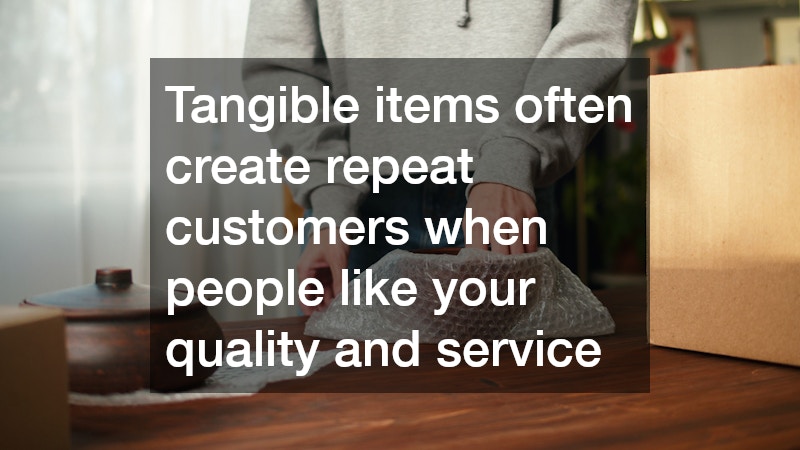- Shopify simplifies online selling with easy setup, customizable themes, built-in payment processing, and access to apps for marketing and inventory management.
- You can sell a wide range of products on Shopify, including physical goods, digital items, services, and print-on-demand products.
- Research and test profitable products using marketplaces, social media trends, Shopify apps, and Google Trends before committing.
- Setting up a professional store involves choosing a memorable domain, mobile-friendly theme, high-quality product listings, payment gateways, and shipping options.
- Effective marketing strategies—social media, email campaigns, SEO, paid ads, and influencer partnerships—are crucial for driving traffic and sales.
Continuous optimization, tracking key metrics, avoiding common mistakes, and scaling strategies like product expansion and loyalty programs increase profitability and long-term success.
Starting an online business can feel overwhelming, but Shopify makes it simple to set up a professional-looking store and start selling. Whether you want to launch a side hustle or a full-time business, this guide will show you how to make money on Shopify with a clear, step-by-step approach. By following these steps, even a complete beginner can start building a profitable online store.
Why Choose Shopify for Your Online Store?
Shopify is one of the most popular e-commerce platforms for a reason. It’s user-friendly, flexible, and designed to help anyone sell online quickly. Here are a few reasons why Shopify stands out:
- Easy setup without coding skills – You don’t need to hire a developer or learn complex programming. Shopify’s drag-and-drop interface lets you create a professional-looking store in hours.
- Built-in payment processing – Shopify Payments and third-party gateways make it simple to accept credit cards, PayPal, Apple Pay, and more.
- Wide range of customizable templates – From minimalistic designs to bold layouts, you can pick a theme that fits your brand.
- Access to apps for marketing, shipping, and inventory – Shopify’s app store has thousands of tools to automate tasks and boost sales.
- Strong customer support and community – Shopify provides 24/7 support, tutorials, and forums where sellers share insights and solutions.
By using Shopify, you can focus on growing your business instead of dealing with technical headaches.
What Can You Sell on Shopify?

One of the first decisions you need to make is what to sell. Shopify supports a wide variety of products, giving you flexibility to find the perfect niche:
- Physical products: Think clothing, home goods, gadgets, or beauty products. Tangible items often create repeat customers when people like your quality and service.
- Digital products: E-books, online courses, music, stock photos, or printables are great because there’s no shipping or inventory to manage.
- Services: Coaching, consulting, and virtual workshops can be sold through Shopify using booking or membership apps.
- Print-on-demand items: Customized T-shirts, mugs, posters, and phone cases allow you to sell unique products without keeping inventory.
Choosing the right product is key. Focus on items you’re passionate about, that solve a problem, or that fill a gap in the market.
How Do You Find Profitable Products?
Finding a profitable niche doesn’t have to be complicated. You just need to research and test ideas before committing:
- Check trends on popular marketplaces – Amazon Best Sellers, Etsy trending items, and TikTok trends give insights into what people are buying now.
- Use Shopify’s app marketplace – Tools like Oberlo, Spocket, and DSers help identify trending products for dropshipping.
- Look at social media conversations – Instagram, Pinterest, and TikTok hashtags reveal consumer interests and rising products.
- Use Google Trends – Track search volume and interest over time to see which products are growing in popularity.
Your goal is to find products that are in demand but not oversaturated, especially if you’re just starting out. Test a few products and track performance to see what resonates with customers.
How to Set Up Your Shopify Store
Once you know what you want to sell, it’s time to create your store. A professional-looking store builds trust and increases the likelihood of sales. Here’s a step-by-step guide:
- Sign up for Shopify – Start with a trial or select a plan that fits your budget. Shopify makes it easy to upgrade as your business grows.
- Choose a domain name – Pick a name that is memorable, reflects your brand, and is easy to spell. Avoid numbers or hyphens if possible.
- Select a theme – Shopify offers free and paid themes. Look for mobile-friendly designs since most shoppers buy on phones. Customize fonts, colors, and layout to match your brand identity.
- Add products – Include high-quality images, detailed descriptions, and competitive prices. Organize products into categories to make browsing easier.
- Set up payment gateways – Shopify Payments is the default, but you can also enable PayPal, Stripe, or local payment options depending on your target market.
- Configure shipping settings – Decide which locations you’ll ship to, set rates, and communicate estimated delivery times clearly to customers.
By following these steps carefully, you’ll have a professional-looking store ready to start selling and make money on Shopify.
How to Price Your Products to Make Money
Pricing is about more than covering costs—you need to attract buyers while making a profit. Here’s how to do it strategically:
- Calculate total costs – Include product cost, shipping, packaging, Shopify fees, and any taxes.
- Research competitors – See what similar products sell for and position your pricing competitively.
- Use psychological pricing – Prices ending in .99 often convert better than round numbers.
- Offer bundled deals or volume discounts – Encourage larger purchases while increasing average order value.
- Test and adjust – If sales are slow, try small adjustments to find the optimal price point.
Remember, your goal is to balance affordability for customers with profitability for your business.
How to Market Your Shopify Store

Marketing is essential. Without traffic, you won’t make sales. There are several approaches you can take:
- Social media marketing – Post regularly on Instagram, TikTok, Facebook, and Pinterest. Use short videos, stories, and influencer partnerships to showcase products.
- Email marketing – Build a mailing list from day one. Send promotions, abandoned cart reminders, and product launches to drive repeat sales.
- Search engine optimization (SEO) – Optimize product pages, blog posts, and meta tags to rank for relevant search terms like “how to make money on Shopify products.”
- Paid ads – Use Facebook Ads, Instagram Ads, and Google Ads to drive targeted traffic. Start small, test campaigns, and scale what works.
- Influencer collaborations – Partner with influencers in your niche for product reviews and shoutouts. Micro-influencers often have high engagement at a lower cost.
Marketing consistently is key. Track results, tweak your approach, and focus on strategies that bring the most traffic and conversions.
How to Make Your Store Stand Out
Standing out from thousands of online stores is critical. Customers need a reason to buy from you rather than your competitors:
- High-quality visuals – Clear, professional photos and videos help customers see the product details.
- Compelling descriptions – Highlight benefits, solve problems, and tell a story that resonates with buyers.
- Customer reviews – Display testimonials to build trust and social proof.
- Strong brand voice – Consistency across your website, social media, and emails creates a memorable impression.
- Exceptional customer service – Quick responses to questions and clear return policies build loyalty.
Small touches like these make your store memorable and increase the likelihood of repeat purchases.
How to Use Shopify Apps to Boost Sales
Shopify’s app marketplace offers tools to automate tasks and increase sales. Some must-have apps for new sellers include:
- Email marketing apps – Automate campaigns and abandoned cart emails (e.g., Klaviyo, Omnisend).
- Upsell and cross-sell apps – Encourage additional purchases at checkout (e.g., Bold Upsell).
- Inventory management apps – Track stock levels, shipments, and suppliers.
- SEO and analytics apps – Improve search rankings and monitor traffic trends.
- Customer support apps – Provide live chat, chatbots, or help desk support for faster problem resolution.
Start with a few essentials and gradually expand your toolkit as your business grows.
How to Handle Shipping and Fulfillment
Shipping is a critical part of your business because happy customers often depend on fast and reliable delivery:
- Decide on fulfillment – Handle shipping yourself, use a warehouse, or dropshipping. Each method has pros and cons.
- Offer multiple shipping options – Standard, express, or local pickup if relevant.
- Provide tracking – Let customers monitor their orders to reduce anxiety and support inquiries.
- Pack items carefully – Ensure products arrive undamaged, which reduces returns and increases satisfaction.
Reliable shipping improves the customer experience and encourages repeat purchases.
How to Track Sales and Optimize Performance
Shopify provides analytics to help you understand what’s working. Focus on key metrics:
- Conversion rates – Percentage of visitors who buy something.
- Top-selling products – Which items generate the most revenue.
- Traffic sources – Where your visitors are coming from (social, search, ads).
- Customer behavior – Monitor pages visited, abandoned carts, and repeat purchase patterns.
Use this data to refine your marketing, adjust pricing, and improve product selection. Continuous optimization helps you make more money on Shopify.
How to Make Money on Shopify Without Making These Common Mistakes
Avoiding common pitfalls can save time, money, and frustration:
- Skipping market research – Selling without understanding demand often leads to low sales.
- Overcomplicating your store design – A clean, simple store converts better than a flashy, cluttered one.
- Ignoring marketing – No traffic means no sales, regardless of product quality.
- Unsustainable pricing – Too low prices can hurt profits; too high can drive customers away.
- Failing to track performance – Without data, you can’t identify what works or fix issues.
Learning from these mistakes early improves your chances of success.
How Long Does It Take to Make Money on Shopify?
There’s no exact timeline—it depends on your niche, marketing, and effort. Some sellers see sales in days; others may take weeks or months.
Tips to accelerate results:
- Launch with a marketing plan – Promote products from day one.
- Focus on one niche – Specialization helps build credibility and attract the right audience.
- Engage on social media – Frequent posting and interactions increase visibility.
- Offer promotions – Discounts and limited-time offers attract first-time buyers.
Patience and persistence are key. Consistent effort produces results over time.
How to Scale Your Shopify Store for More Profit
Once you start making consistent sales, it’s time to grow:
- Expand your product line – Add complementary items to increase average order value.
- Increase marketing spend – Focus on campaigns that have shown ROI.
- Offer subscriptions or bundles – Encourage repeat purchases and larger orders.
- Reach international markets – Expand shipping to new countries.
- Loyalty programs – Reward repeat customers with discounts, points, or exclusive products.
Scaling requires reinvestment and planning but can significantly boost revenue.
Can Anyone Make Money on Shopify?
Absolutely. Shopify is accessible to anyone willing to put in the work. Success depends on:
- Choosing the right products
- Building a professional store
- Marketing effectively
- Understanding your customers
- Continuously improving strategies
Even starting small, consistent effort can lead to a profitable online business.
Closing Thoughts
Learning how to make money on Shopify doesn’t have to be complicated. By following these steps—choosing products carefully, building a professional store, marketing effectively, and optimizing operations—you can start generating income online.
Shopify gives you the tools, but your dedication and strategy determine your success. Start small, learn as you go, and watch your online store grow into a profitable venture.